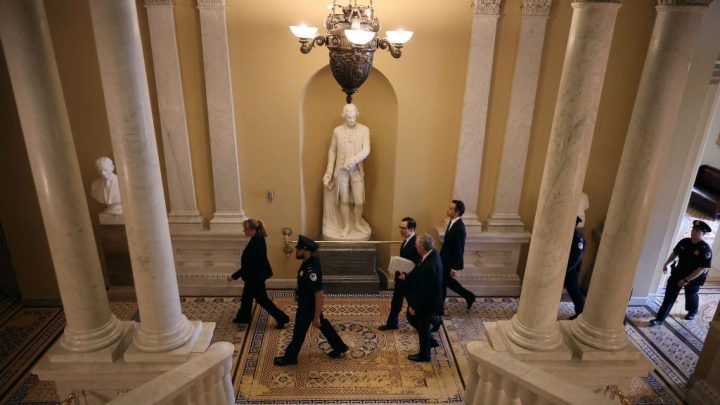
What the $2 trillion economic stimulus package will mean for you

This post was updated on March 27 at 6:20 p.m. Eastern time.
President Donald Trump has signed into law a $2 trillion economic stimulus package — the largest economic rescue measure in history — to help businesses and employees affected by the COVID-19 crisis.
Since the novel coronavirus began spreading across the U.S., businesses across the country have shuttered and laid off workers. For the week of March 21, about 3.3 million had filed unemployment claims — the largest number on record.
Here’s the type of relief that the bill is expected to include:
1) Direct checks: $1,200 will go toward adults and $500 to children based on 2018 tax returns or — if they’ve already filed — 2019 returns.
However, there are stipulations. That $1,200 would go to individuals making up to $75,000, while $2,400 would go to couples who made up to $150,000.
Payments will be reduced for individuals and couples making more than that amount — until they hit a threshold. Financial assistance will not be granted to individuals making more than $99,000 and couples earning more than $198,000.
Senate Minority Leader Chuck Schumer said in a CNN interview that President Donald Trump wants the checks to be sent out starting April 6. However, Douglas Holtz-Eakin, who served on President Bush’s Council of Economic Advisors and is currently president of the American Action Forum, says it will take six weeks at minimum to get a plan like this set up and executed.
2) Expanded unemployment benefits: Workers in most states are currently eligible for up to 26 weeks of benefits — that will now be extended to 39 weeks.
The bill will also give Americans an extra $600 a week, for four months, on top of the maximum unemployment benefits states already dole out.
Gig workers, furloughed employees, and freelancers will be eligible.
3) Small business aid: $377 billion, largely in the form of loans, will be set aside.
4) Corporate aid: The Treasury Department will have the authority to provide $500 billion in loans (or other forms of investment) to cities, states, and corporations, including airlines and major manufacturers like Boeing.
That amount had been a major point of contention among Democrats, who had called it a “slush fund” and argued that it would give Treasury Secretary Steven Mnuchin the ability to help industries without transparency.
However, a special oversight committee will now be implemented. According to the Project on Government Oversight, it will collect and publish quarterly reports from recipients of the stimulus funds, and have a special inspector general.
The bill also bans companies from stock buybacks for a year after their loans are paid back.
5) Health care assistance: $150 billion will go to hospitals and other medical facilities. Some of this amount will be dedicated to testing supplies; new construction to house patients; and emergency operation centers.
There’s a lot happening in the world. Through it all, Marketplace is here for you.
You rely on Marketplace to break down the world’s events and tell you how it affects you in a fact-based, approachable way. We rely on your financial support to keep making that possible.
Your donation today powers the independent journalism that you rely on. For just $5/month, you can help sustain Marketplace so we can keep reporting on the things that matter to you.

















